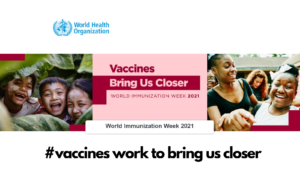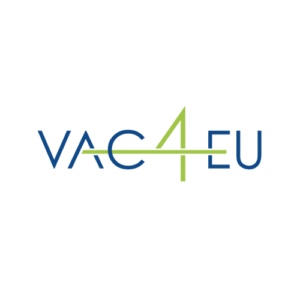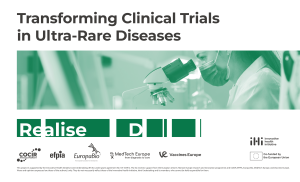By Elisa Ferrer Mallol , Head of Partnerships at Teamit Research
This year’s World Immunization Week theme is ‘Vaccines bring us closer’; no other message would have been more appropriate after entering the second year of COVID-19 pandemic and enduring the isolation caused by social distancing and continued lockdowns.  Nevertheless, vaccines have been protecting us for more than two centuries now. According to the World Health Organization (WHO)[1], vaccines relieve communities from the burden of more than 20 life-threatening diseases and save millions of lives every year. The introduction of routine widespread immunization programmes has allowed to eradicate infectious diseases at a global level, like smallpox, or to greatly reduce their geographical extent (e.g., polio), and in Western countries has even made us ‘forget’ that those diseases ever existed. It is estimated that vaccines prevent 2-3 million deaths every year globally and are instrumental in reducing child mortality from diarrhoea, measles or whooping cough, amongst other potentially deadly infectious diseases. Vaccination not only results in better health outcomes but has also a positive impact at socio-economic level thus increasing health equity, reducing healthcare costs and increasing productivity[2]. Achieving ‘herd immunity’ through vaccination brings an added value by reducing the risk of infection and transmission, thus protecting entire communities including vulnerable populations who cannot be vaccinated.
Nevertheless, vaccines have been protecting us for more than two centuries now. According to the World Health Organization (WHO)[1], vaccines relieve communities from the burden of more than 20 life-threatening diseases and save millions of lives every year. The introduction of routine widespread immunization programmes has allowed to eradicate infectious diseases at a global level, like smallpox, or to greatly reduce their geographical extent (e.g., polio), and in Western countries has even made us ‘forget’ that those diseases ever existed. It is estimated that vaccines prevent 2-3 million deaths every year globally and are instrumental in reducing child mortality from diarrhoea, measles or whooping cough, amongst other potentially deadly infectious diseases. Vaccination not only results in better health outcomes but has also a positive impact at socio-economic level thus increasing health equity, reducing healthcare costs and increasing productivity[2]. Achieving ‘herd immunity’ through vaccination brings an added value by reducing the risk of infection and transmission, thus protecting entire communities including vulnerable populations who cannot be vaccinated.
The progressive understanding of the human immune system, together with the advances in biotechnology, have led to safer and more sophisticated vaccine products targeting specific pathogen sites and inducing stronger immunity and higher protection. However, the perceptions related to the benefits and risks of vaccines are a matter of public debate[3]. Since vaccines are administered to a healthy population to prevent disease, the public tolerance for the appearance of adverse events is lower than for other medicinal products. While frequent adverse events
 are usually detected during clinical trials, rare adverse events only arise when the vaccine reaches the market and is administered to a much broader population. Transparency in risk communication, as well as a robust post-marketing surveillance system are key to monitor and manage the potential risks associated with vaccines.
are usually detected during clinical trials, rare adverse events only arise when the vaccine reaches the market and is administered to a much broader population. Transparency in risk communication, as well as a robust post-marketing surveillance system are key to monitor and manage the potential risks associated with vaccines.
The scientific community, vaccine developers, regulators and governments have swiftly responded to the COVID-19 public health emergency by contributing to develop and evaluate safe and effective vaccines in record time, with the added challenge of scaling up production and supply to match immunization needs at global level. Therefore, continuous data collection on vaccine use and identification of newly emerging adverse events is of utmost importance to fully characterize vaccines’ safety profile and allow a rapid assessment of their benefits and risks as we move forward.
In this regard, Teamit is a proud member of VAC4EU (Vaccine monitoring Collaboration for Europe) and contributes to VAC4EU’s vision of providing the best real-world evidence on vaccine coverage, benefits and risks in Europe to support public health and decision making. VAC4EU and its members are a thriving vaccine expert community that has participated in the preparation of an European infrastructure for COVID-19 vaccine monitoring through the European Medicines Agency (EMA) ACCESS (vACCine covid-19 monitoring readinESS) project  and is conducting specific studies in a collaborative fashion across European countries.
and is conducting specific studies in a collaborative fashion across European countries.
Ongoing and concerted cross-country collaboration around vaccines development will be essential in ending this pandemic and being able to face new threats yet to come. For the time being, vaccines offer us a real chance to regain our lives and reconnect with our loved ones; something that definitely we do not want to miss.
[1] World Health Organization (WHO) Global Vaccine Action Plan 2011-2020. Available at https://www.who.int/health-topics/vaccines-and-immunization#tab=tab_1.
[2] Rodrigues CMC, Plotkin SA. Impact of Vaccines; Health, Economic and Social Perspectives. Front Microbiol. 2020 Jul 14;11:1526. doi: 10.3389/fmicb.2020.01526
[3] Karafillakis E, Larson HJ; ADVANCE consortium. The benefit of the doubt or doubts over benefits? A systematic literature review of perceived risks of vaccines in European populations. Vaccine. 2017 Sep 5;35(37):4840-4850. doi: 10.1016/j.vaccine.2017.07.061.




